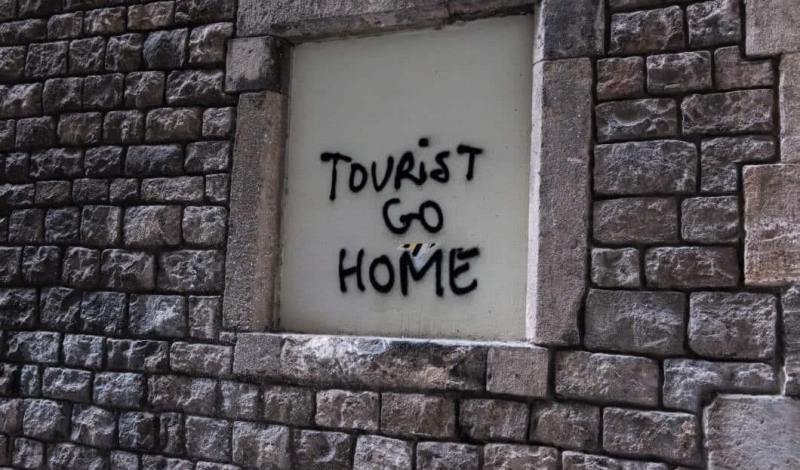Following World War II, Spain, much like other European nations, began to see significant economic expansion. This growth, in turn, spurred considerable improvements to its tourism-related infrastructure. New hotels were built, and urban areas saw modernization efforts, with streets being cleaned and structures like the Torre de Madrid appearing on the skyline. These developments largely laid the groundwork for Spain to emerge as a major tourist hotspot. Furthermore, social reforms introduced in the 1930s—paid holidays being one notable example—triggered a sizable jump in tourist arrivals across Europe.
Continued Growth Since the 1960s
From the 1960s onwards, tourism in Spain really took off, largely fueled by an increasingly open approach to Europe and advances in transportation technology. Expanding airport facilities in places like Palma de Mallorca and Málaga, along with the construction of those motorways connecting Madrid to the Mediterranean coast, made it a lot easier to get to Spain’s various attractions. Today, Spain is the world’s second most popular tourist destination, only trailing France. Visitors are mostly drawn to cities like Barcelona and Madrid, as well as the Balearic and Canary Islands. This concentration of tourists, however, has created problems with overtourism in Spain, which is worsening regional inequalities and putting a strain on local communities.
Growing Frustration Among Residents
The summer of 2024 brought widespread demonstrations throughout Spain, as locals expressed their growing worries about the negative effects of overtourism in Spain. For example, on July 6th, according to El Salto, some 20,000 people took to the streets of Barcelona to protest the way local businesses were being displaced by huge, international tourist chains. On July 20th of the same year, RTVE reported similar numbers – another 20,000 demonstrators – in Palma, on the Balearic Islands. These protesters called for limits on both air travel and cruise ship traffic. You’ll often hear locals use the somewhat pejorative term “guiris” to describe foreign tourists. It’s often aimed at Germans, Brits, and French visitors, who are perceived as noisy, disrespectful, and, frankly, disruptive.
Activism in Barcelona
In Barcelona, tourism accounts for around 15% of the city’s total economic output (GDP). The impact of mass tourism there is, obviously, pretty substantial. Rising costs of living have pushed some residents out of the city altogether, while overall quality of life has seemingly gone down. On April 27, 2025, some activists took bolder steps, blocking a tourist bus close to the Sagrada Familia and covering the windshield with a tarp that read, “Let’s put out the tourist fire.” There were also stickers bearing skull-and-crossbones images, proclaiming “Tourism kills the city,” popping up just about everywhere. Before that, in April 2024, Barcelona authorities removed a well-known tourist bus route to Park Güell from Google Maps and similar apps – it seems to have helped quite a bit in reducing visitor numbers and relieving some of the stress on local transport.
Click here to preview your posts with PRO themes ››

Overtourism in the Canary Islands
The Canary Islands, which in 2023 played host to over seven times their resident population of 2.2 million, are dealing with some pretty serious consequences as a result of overtourism. In April of 2024, around 60,000 people came out to protest under the banner Canarias tiene un límite (“The Canary Islands have a limit”), drawing attention to declining living conditions that are made worse by the islands’ high rates of poverty and poor health stats. On April 11th, 2024, a group of activists calling themselves Canarias se agota (“The Canary Islands are exhausted”) started a hunger strike in Tenerife, demanding that the authorities take urgent action.
Economic Dependence on Tourism
Despite these issues, it’s worth keeping in mind that tourism is a huge part of the Canary Islands’ economy, contributing something like 35% of regional GDP and providing approximately 40% of all jobs. The problem is that this heavy reliance has resulted in over-specialization, with tourism taking precedence over sectors like agriculture. As a result, the archipelago now imports almost 80% of its food. Now, the people protesting aren’t necessarily calling for an end to tourism, but rather for measures that would curb overtourism, paving the way for a more sustainable model that takes into account the environment and also promotes diversified economic activities.
Striking a Balance
The appeal of regions like Barcelona and the Canary Islands to tourists, while certainly driving economic activity and creating employment opportunities, does come with a cost. Specifically, the quality of life for residents can be negatively affected. Furthermore, environmental and social stability in these popular destinations is put at risk. The rise in protests signals a desire for a tourism model that is both more sustainable and more equitable. In its position as a major global tourist destination, Spain faces the challenge of finding a balance between the clear economic upsides and the need to protect its natural resources and social structures, working to ensure that visitors and locals can coexist harmoniously.


